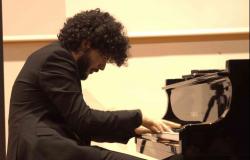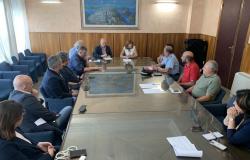How do you vote for the European elections?
Emilia-Romagna is part of the II Constituency (that of the north-east together with Veneto, Trentino Alto Adige, Friuli Venezia Giulia) and to vote it is sufficient to draw a mark on the symbol corresponding to the chosen list (Forza Italia, Svp, United States of Europe, Popular Alternative, Peace Earth Dignity, 5 Star Movement, Freedom Cateno De Luca, Green Left Alliance, Democratic Party, Brothers of Italy, Action, League). It is possible – but not mandatory – to indicate from one to three preference votes for candidates from the chosen list (split voting is not permitted, i.e. voting for one list and indicating preference for candidates from another list): in the case of two or three preferences, these must refer to people of different sexes. In the case of two preferences, therefore, it is necessary to indicate a woman and a man; in case of three preferences, two women and one man or vice versa. To indicate a preference it is necessary to write the candidate’s surname or surname and name on the lines next to the symbol.
In Italy it is not possible to vote by proxy, either online or by post.
How are members of the European Parliament elected?
For the European elections, a proportional electoral system is used: the allocation of seats therefore takes place in such a way as to assign to the different lists a number of places proportional to the votes received. Italy, as mentioned, uses preferential voting, i.e. it gives the possibility of indicating from one to three preferences among the candidates on a list. Once the number of seats available to a list in each constituency has been determined (there are five in total), the candidates with the highest number of preferences will be elected. There is a threshold: for the purposes of the actual election, the lists must have reached at least 4% of the valid votes at national level.
On the European Parliament website, the national results will be updated in real time starting from Sunday evening for all voting countries.
Who are some of the candidates of the major Italian parties for the Northeast constituency?
The head of the PD list is the outgoing president of Emilia-Romagna, Stefano Bonaccini, immediately followed by Annalisa Corrado. In fifth place, then, Alessandro Zan.
As in the other constituencies, even in the one where Emilia-Romagna appears, the leader of the Brothers of Italy is Prime Minister Giorgia Meloni who, even if elected, is already known not to go and fill the position in the European Parliament; she like Antonio Tajani, leader of Forza Italia. Behind the prime minister, for Fratelli d’Italia, there is Sergio Berlato. Further down, well known in Bologna, Stefano Cavedagna. The list of the 5 Stars is led by Sabrina Pignedoli, while that of the Alleanza Verdi Sinistra is Cristina Guarda, followed by Mimmo Lucano. With Azione, led by Carlo Calenda, also Federico Pizzarotti, while with the Lega, Paolo Borchia is at the top of the list. To close, General Vannacci.
Are there supports for people with disabilities, non-ambulatory or hospitalized people?
Facilities to guarantee the right to vote are ensured for people hospitalized or in nursing homes, for voters with walking difficulties or serious infirmities. It is necessary to request to exercise your right to vote in another place than your polling station: detailed information in this regard can be found in the FAQ dedicated to the 2024 European elections on the Ministry of the Interior website.
Administrative elections
From Piacenza to Rimini there are 225 municipalities called to elect the new mayor and renew the city council: for this reason over two million voters are interested in voting. Candidates and lists of all the Municipalities are available on the Emilia-Romagna Region website.
How do you vote in municipalities with more than 15 thousand inhabitants?
Voters are given a card with the names of the mayoral candidates already listed. Under each name, the symbols of the lists that support the candidate.
For municipalities with more than 15 thousand inhabitants, the voting possibilities are of three different types: by drawing a mark only on the symbol of the list, preference is assigned to the list itself and to the mayoral candidate supported by the voted list; with separate voting, i.e. by drawing a sign on the symbol of the chosen list and, at the same time, on the name of a mayoral candidate not connected to the voted list but supported by other lists; finally, drawing a mark only on the name of the candidate for mayor. Each voter can also express one or two preference votes by writing the surname of no more than two candidates included in the list he voted for. In the case of two preferences, these must concern candidates of different sexes from the same list.
The candidate who obtains the absolute majority of valid votes (at least 50% plus one) is elected mayor in the first round. In the event that no candidate reaches this threshold, voting will return on Sunday 23 June (from 7am to 11pm) and Monday 24 (from 7am to 3pm) for the run-off, choosing at that point between the two candidates with the highest number of votes in the first round.
How do you vote in municipalities with up to 15 thousand inhabitants?
Even for municipalities with up to 15 thousand inhabitants, voters are given a card with the names of the mayoral candidates already listed, with the symbol of the only list that supports them next to it. To vote it is necessary to make a mark on the symbol of the list or on the name of the candidate, but separate voting is not possible. The candidate who obtains the highest number of votes is elected mayor. In the event of a tie between two candidates, voting will return for the latter on Sunday 23 June (from 7am to 11pm) and Monday 24th (from 7am to 3pm). Also in this case, whoever obtains the most votes of the two will be elected. In the event of a further tie, the eldest is declared elected.
How to renew the electoral card?
The electoral card can be renewed at the electoral office of your municipality of residence, an office which will also remain open on voting days for the entire time of the operations and in the days preceding.





